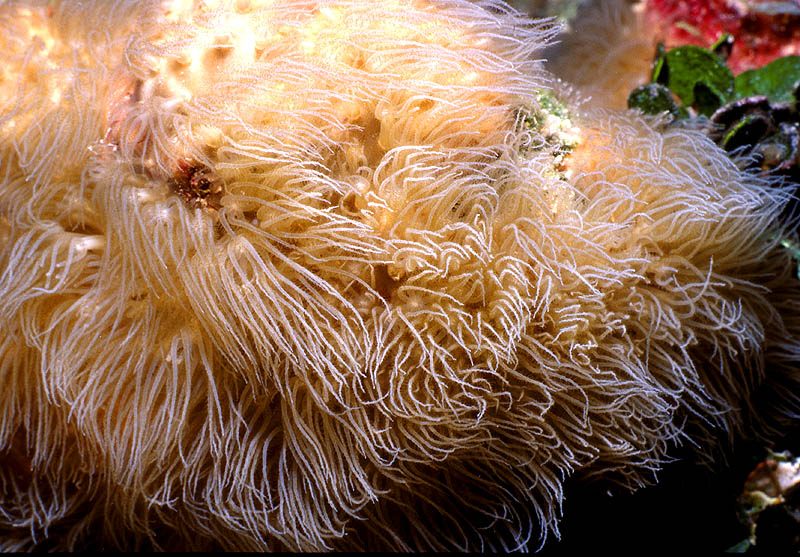
Volume 4 Number 4
Delicate Tentacles:
A Colony of Spaghetti Corals


Volume 4 Number 4
Delicate Tentacles:
A Colony of Spaghetti Corals

All Corals are animals. A single coral animal, called a polyp (say "PAH-lip"), lives in a hole in a "house" that it builds. Polyps live together in colonies made up of as many as thousands of polyps. The houses built by all these polyps are the foundation for the tropical-reef ecosystem.
This picture shows the tentacles of a Coral I like to call Spaghetti Coral. This closeup picture shows a section of the coral reef only 3-inches across. The tentacles of these polyps are each about 1 inch long. These tentacles stream out from the coral, reaching into the ocean currents to snare tiny plants and animals called plankton that float in the ocean water.
Spaghetti Coral is a type of Octocoral, so-called because each polyp has eight tentacles. It is hard to see an individual polyp in this picture, but the brown dots near the upper-left corner of this picture show holes where the polyps live. These holes are holes in the skeleton built by the coral colony. You can see these holes because a few of the polyps have retreated into the shelter of their "houses."
How many tentacles can you count in this picture? How many polyps would you guess are in this picture?
Scientists use scientific names to identify marine creatures. The scientific name for the coral in this picture is "Erythropodium caribaeorum." Marine creatures also have common names, and many creatures have more than one common name. These multiple names can be confusing, which is why scientific names are used to eliminate the confusion. I like to call this coral the Spaghetti Coral, because the tentacles remind me of a plate of spaghetti. I have also heard this coral called Angel-Hair Coral. Can you think of a better common name for this coral?
Also notice the small, green leaves of algae near the upper-right corner of this picture. This is possibly a type of plant called Mermaid's Fan Alga. Each leaf was about the size of a dime.
--------------------
e-ReefNews and embedded illustrations are
Copyright © 2002 ReefNews, Inc.
ReefNews ® is a registered trademark of ReefNews, Inc.